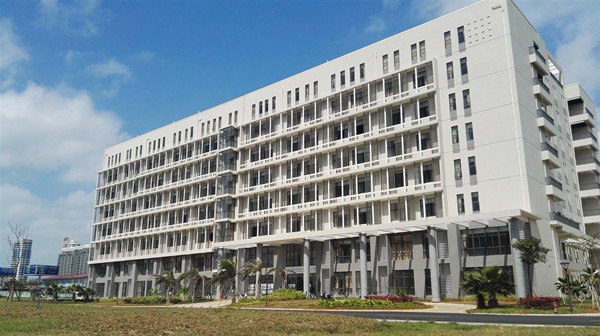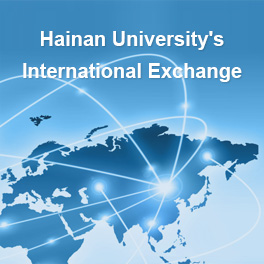State Key Laboratory of Marine Resource Utilization in South China Sea
Updated: 2019-06-10

The State Key Laboratory of Marine Resource Utilization in the South China Sea (the "Lab") is both the first state key laboratory for marine resources development, utilization and protection in the South China Sea and the only school-based state key laboratory co-established by Hainan Province and national ministries. In terms of members, Academician Zhang Si is currently the director of the Academic Committee, Professor Li Jianbao is the director of the Lab, and Professor Wang Ning is its deputy director.
With applied basic research as a priority, the Lab's work involves the three aspects of marine living resources, marine mineral resources, and marine information resources. The Lab has confirmed three major research areas: utilization of marine living resources in the South China Sea, utilization of new materials for marine mineral resources in the South China Sea, and utilization of marine information resources in the South China Sea. Since its launch in July 2016, the Lab has always been committed to proactively aligning major national strategies with local economic and social development needs, focusing on the South China Sea, developing South China Sea resources and serving the national strategy, with the aim of furthering the utilization of national marine resources.
I. Competent Team
According to the object and direction of research, the Lab sets up 14 project-driven research groups at present with 48 researchers, including 31 researchers with high professional titles. A solid research team has come into being with backbone personnel aged around 40, which is characterized by a reasonable structure (regarding education background), solid professional basis, active ideas, intense vitality and creativity.
II. Progress in Scientific Research
The Lab's research projects number over 50, including some from the National Key R&D Program of China, the National Basic Research Program of China, the National Natural Science Foundation of China, and four awarded with the Prize of Sci-Tech Advancement of Hainan Province. The Lab has published more than 300 SCI papers. On top of that, positive progress has been made in the tropical marine pasture, marine life, extraction of marine elements, storage and transformation of combustible ice, marine information processing technology and application of resources.
III. Facilities
The Lab officially launched a new scientific research building with floorage of over 12,000 sq. m. in January 2017. The public platform of experimental equipment is armed with advanced instruments and equipment, including SEM, AFM, ICP-MS, XRD, XPS, HPLC, Raman spectrometer. Accessible to the scientific research personnel of the whole university, the platform has established a sound management system of instrument operation, offering better technical service and support for science.
IV. Cooperation and Exchange
Since its inception, the Lab has been committed to opening to the outside world under the policy of "Opening, Exchange, Cooperation, Competition". The year of 2018 saw about 70 external exchanges including international exchange (about 20), domestic exchange (about 50), academic reports (about 60), and the signing of an agreement with Southwest Petroleum University and other universities and scientific research institutions to jointly establish the Lab. With that substantive cooperation the Lab with the Second Institute Of Oceanography has co-sponsored the 280th China Engineering Science and Technology Forum themed with "International Focus on Marine Environment, Rights and Interests: New Opportunities for Continental Shelf's Delimitation Sci & Tech in the Belt and Road"; and hosted the International Symposium on Coral Symbionts Response to Global Climate Change and Human Activities.
Looking forward, based on mechanism innovation, resource integration and interdisciplinary integration, the Lab will play a synergistic role of various important elements to become a national marine scientific research laboratory at a high level and with inter-multidisciplinary integration.

 More support for college students starting businesses
More support for college students starting businesses  Hainan Univesity 3rd International Young Scholars Forum
Hainan Univesity 3rd International Young Scholars Forum 